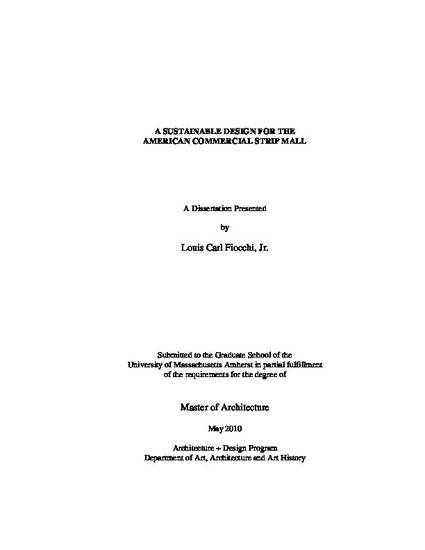
- Commercial,
- Strip Mall,
- Design,
- Sustainable,
- Green
The purpose of this project is to present an alternative in form, materials, and energy performance to the existing building type that has been the staple used in construction of American Commercial Strip Malls since the latter part of the nineteenth century. The project progresses through two phases. The initial phase is the designing of an energy efficient structure that is the basic unit in a system of modularity. This structure permits joining itself together with similar units to form an assortment of assemblies with different possible geometries that are in turn able to respond to various site geometries and retail area programs. The second phase is the development of a site design for a Commercial Strip Mall using an existing site and inserting a combination of the modular design assemblies into that site, maximizing buildable square footage, while attending to all pertinent regulations and codes yet still incorporating desirable design criteria. The research begins with an initial historical examination of the building type coupled with precedent studies of 1960 American and contemporary European examples. Research includes identification of all applicable zoning regulations and building codes and within those boundaries determining and incorporating existing available sustainable and energy saving technologies and materials into the design. The economic feasibility of a project of this type is examined through costing software in order to discuss the projects fiscal viability. In conclusion, the project realizes a design form that aesthetically joins the selected precedents. It is a form that allows construction in a controlled factory setting, mitigating costs, and improving quality. The modularity aspect of the project provides the versatility needed for the design to be employed on different sites; the materials and systems address sustainability and energy performance. Finally, the economic examination supports the idea that building this design or one similar becomes more and more a possibility as peak oil approaches and global warming remedies become mandates.
Available at: http://works.bepress.com/lcarl_fiocchi/1/
